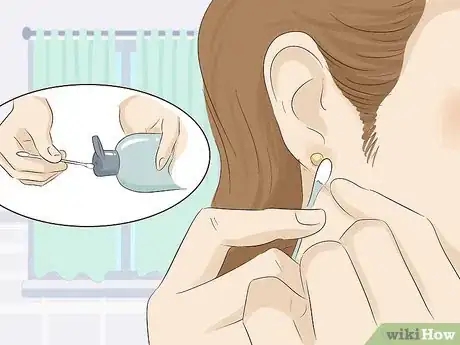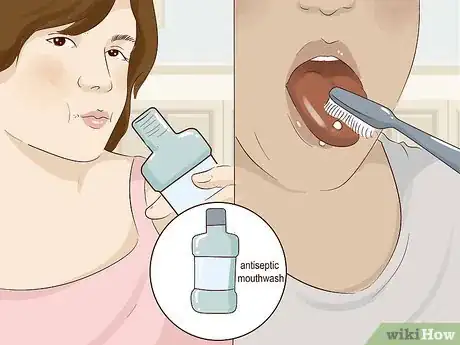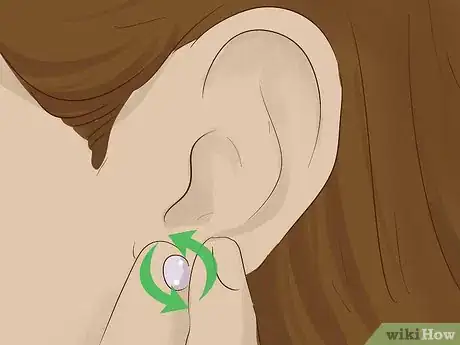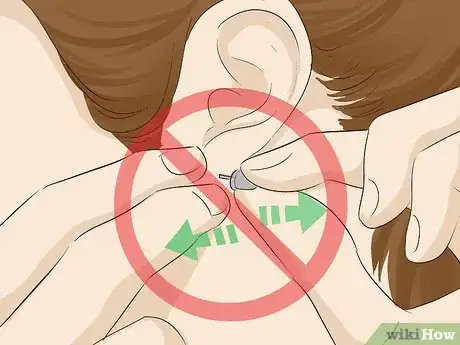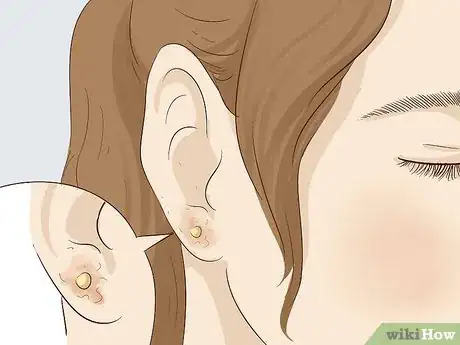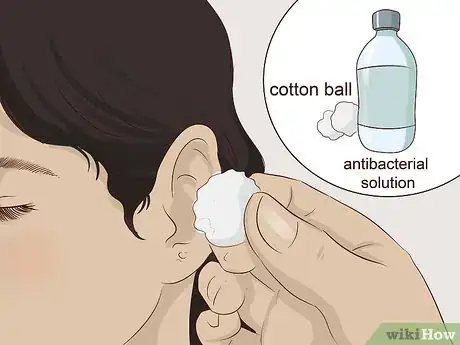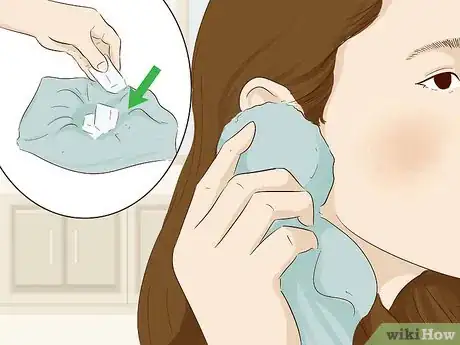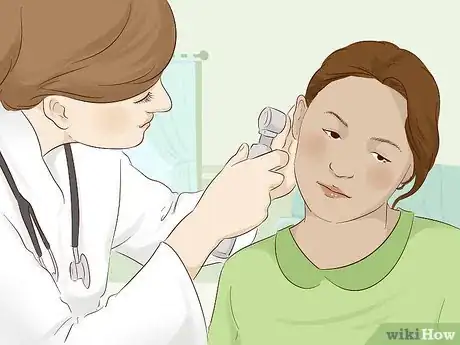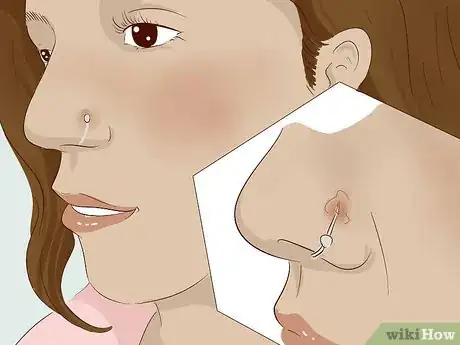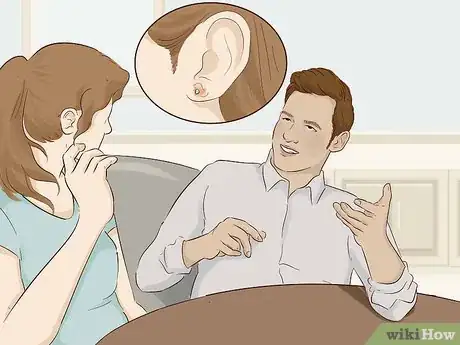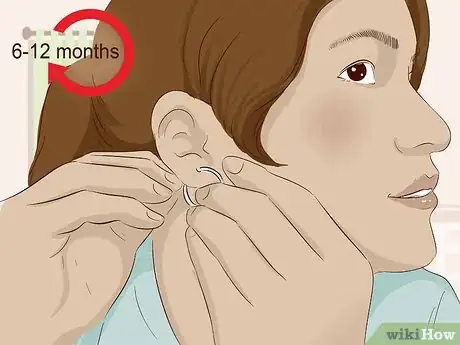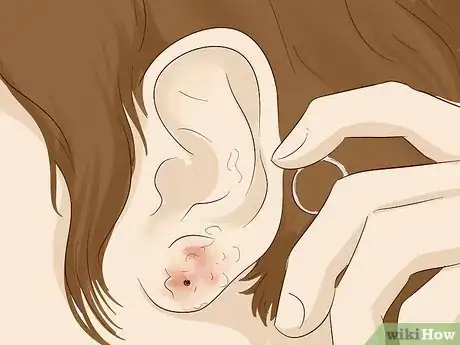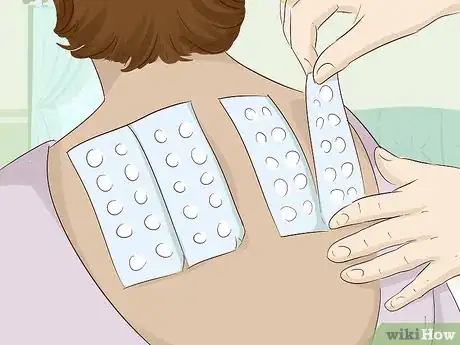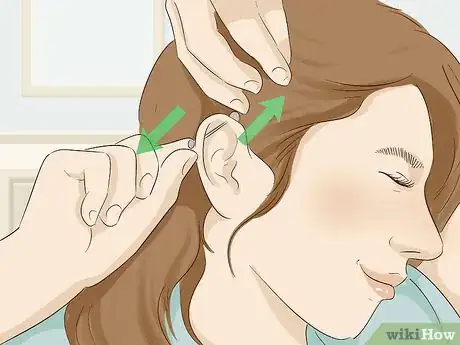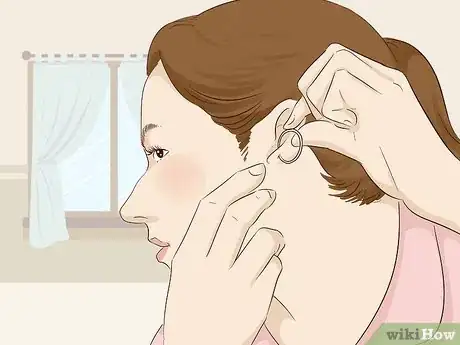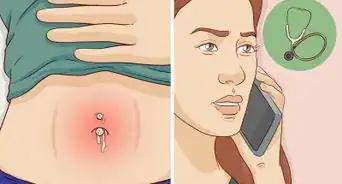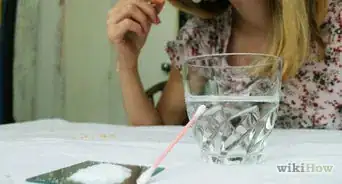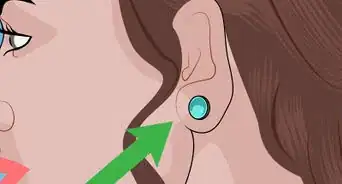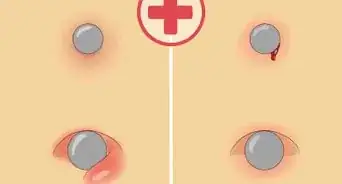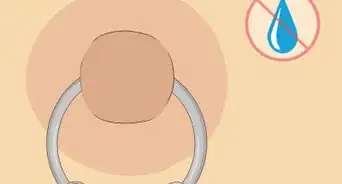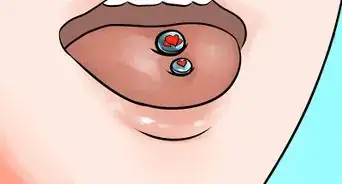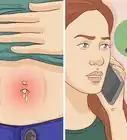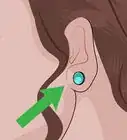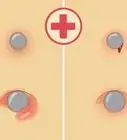This article was co-authored by Karissa Sanford. Karissa Sanford is the Co-owner of Make Me Holey Body Piercing, a piercing studio based in the San Francisco Bay Area that specializes in safe and friendly body piercing. Karissa has over 10 years of piercing experience and is a member of the Association of Professional Piercers (APP).
There are 14 references cited in this article, which can be found at the bottom of the page.
This article has been viewed 455,225 times.
Because your body's immune system is always on alert, piercing rejection is a risk with any piercing you get — after all, a piercing is technically a small wound in your body. Practicing good hygiene can prevent your piercing from getting infected or from migrating. Piercings rejected due to allergic reactions will usually need to be removed, but infections can heal over time. If your piercing shows signs of rejection or infection, talk to your piercer or a qualified doctor as soon as possible.
Steps
How to Treat Infections
-
1Look for signs of mild infection. In cases of mild infection, your body has not likely rejected the piercing and can still heal. Infection symptoms include red or swollen skin, tenderness or heat when touching the piercing, or yellow-green discharge.[9]
-
2Seek medical attention if you develop signs of a serious infection. If your piercing becomes seriously infected, you must get medical help right away. Signs of a serious infection include:[10]
- High fever. 102 °F (38.9 °C) is high for children, and 104°F (40 °C) is high for adults.
- Body chills
- Nausea and Vomiting
- Red streak around the piercing
- Swollen lymph nodes
-
3Clean the infected piercing with a cotton ball and antibacterial solution. Wash the piercings at least twice a day with antibacterial soap. Moisten a cotton ball with this solution and clean your piercing much like you used the soap or saline solution.
- Ask the studio you received your piercing from for antibacterial solution recommendations.
-
4Use a compress to relieve your piercing. Cold compresses relieve swelling or aching. Never apply ice directly to the piercing; wrap it in a cloth or towel instead. Warm compresses can encourage blood flow to your piercing and heal your infection when used interchangeably with cold compresses.
- If warm compresses cause swelling, stop using them.
- For inflammation, apply a cold compress for at least 20 minutes every 2-3 hours. Once your piercing is no longer inflamed, alternate between hot and cold compresses every 10 minutes for as long as desired.[11]
- Use a saline solution instead of water in warm compresses. Dampen a towel or cloth with the solution and warm it in a microwave for 30 seconds. Make sure it's not too hot before you put it on your piercing so you don't burn yourself.
-
5Go to the doctor if inflammation persists for longer than 24 hours. Piercing infections can take 4-6 weeks to heal, and in many cases, your body will not reject it. But if you haven't experienced relief from swelling or experience acute pain for over 6-24 hours, visit a medical clinic. Your doctor can prescribe antibiotics, advise additional treatment, or identify a potential allergy.[12]
- Serious infections can happen quickly, so you must seek medical attention right away if your piercing isn't healing.
- A piercing should never cause serious pain. If you're experiencing serious pain, seek medical attention immediately.
Dealing with Piercing Rejection
-
1Recognize the signs of migration. If your piercing has shifted from its original site, you may be experiencing migration. Your piercing might have migrated if you notice constant soreness, a loose-hanging piercing, or a larger hole around the piercing. Migration and rejection are connected. Usually, migration is a symptom of rejection.[13]
- Although rejection usually happens to newer piercings, your body can still reject older piercings.
- Once your piercing starts migrating, it usually cannot be treated. Rejection is irreversible.
-
2Visit the place you got your piercing. In many cases, once your piercing has been rejected, you need to have the piercing removed. Talk to the person who pierced your ears and ask for their opinion. They might remove the piercing, or they might diagnose you with an infection and advise treatment.
-
3Re-pierce in 6-12 months. If you do have to remove the piercing, you can get the area re-pierced after it has healed. Return to a professional piercer between six months to a year after removal.[14]
Addressing Allergic Reactions
-
1Separate the signs of an allergic reaction from infection. In some cases, your body might reject a piercing due to allergies. You can recognize an allergic reaction by a burning sensation, severe itching, gaping skin, a rash, or clear to yellowish discharge around your piercing.
-
2Go to a doctor or dermatologist for an allergy test. Doctors can recognize allergies by looking at your skin, but they cannot pinpoint specific allergies. Visit a dermatologist if you want a skin patch test to verify with certainty whether you're allergic to your piercing.[15]
-
3Remove the piercing if you're allergic. Metal allergies are usually lifelong and cannot be treated. If your body's rejecting the piercing due to allergy, you must remove the piercing. Avoid jewelry made of whatever metal your piercing was to avoid future rejection.
- You may be able to use surgical steel piercings if you suffer from metal allergies. Surgical steel is designed to not cause allergic reactions.
-
4Re-pierce your body after the area has healed. Wait 6-12 months before you get pierced again. Before you get another piercing, get a skin patch test to check which metals you're allergic to. Choose a hypoallergenic piercing made of a metal you know won't trigger a reaction. Tungsten, titanium, silver, platinum, and 14-karat gold are all hypoallergenic alloys.[16]
Expert Q&A
Did you know you can get expert answers for this article?
Unlock expert answers by supporting wikiHow
-
QuestionShould I twist my piercing?
 Karissa SanfordKarissa Sanford is the Co-owner of Make Me Holey Body Piercing, a piercing studio based in the San Francisco Bay Area that specializes in safe and friendly body piercing. Karissa has over 10 years of piercing experience and is a member of the Association of Professional Piercers (APP).
Karissa SanfordKarissa Sanford is the Co-owner of Make Me Holey Body Piercing, a piercing studio based in the San Francisco Bay Area that specializes in safe and friendly body piercing. Karissa has over 10 years of piercing experience and is a member of the Association of Professional Piercers (APP).
Body Piercing Specialist
-
QuestionHow can I make my piercing heal faster?
 Karissa SanfordKarissa Sanford is the Co-owner of Make Me Holey Body Piercing, a piercing studio based in the San Francisco Bay Area that specializes in safe and friendly body piercing. Karissa has over 10 years of piercing experience and is a member of the Association of Professional Piercers (APP).
Karissa SanfordKarissa Sanford is the Co-owner of Make Me Holey Body Piercing, a piercing studio based in the San Francisco Bay Area that specializes in safe and friendly body piercing. Karissa has over 10 years of piercing experience and is a member of the Association of Professional Piercers (APP).
Body Piercing Specialist Rinse your piercing in the shower and use a sterile saline wound wash once or twice a day. Another important part of taking care of any piercing is that you don't touch or move it unnecessarily. You should also remember to treat your body well. Your body is doing the work when it comes to the healing process, and if you're treating your body poorly, there's a chance that your healing could be compromised.
Rinse your piercing in the shower and use a sterile saline wound wash once or twice a day. Another important part of taking care of any piercing is that you don't touch or move it unnecessarily. You should also remember to treat your body well. Your body is doing the work when it comes to the healing process, and if you're treating your body poorly, there's a chance that your healing could be compromised. -
QuestionI got my belly button pierced, and my body rejected it. How can I pierce it without it being rejected again?
 Community AnswerWait for it to completely heal! Then go to your piercer and get it done again. Wear no tight clothing over it, avoid touching it, and wash it regularly. This should help, but there's never a 100% chance it won't reject.
Community AnswerWait for it to completely heal! Then go to your piercer and get it done again. Wear no tight clothing over it, avoid touching it, and wash it regularly. This should help, but there's never a 100% chance it won't reject.
Warnings
- Avoid wearing tight clothing over infected piercings. Excessive rubbing can cause irritation.⧼thumbs_response⧽
- Severe rejection, if not removed early, can cause scarring. Contact your piercer when you notice early signs.⧼thumbs_response⧽
- If you notice a thick scar growing over where your piercing is, you may be prone to keloids. If that's the case, you may not be able to have piercings. Talk to your doctor if you think you might have keloids.⧼thumbs_response⧽
- The navel and eyebrow areas are more vulnerable to rejection than other areas.[18]⧼thumbs_response⧽
References
- ↑ Karissa Sanford. Body Piercing Specialist. Expert Interview. 29 October 2019.
- ↑ http://www.elle.com/beauty/tips/a26954/piercing-after-care-tips/
- ↑ http://www.mayoclinic.org/healthy-lifestyle/adult-health/in-depth/piercings/art-20047317?pg=2
- ↑ http://www.webmd.com/oral-health/guide/oral-piercing#2
- ↑ https://www.liveabout.com/piercing-healing-to-rotate-or-not-3189296
- ↑ Karissa Sanford. Body Piercing Specialist. Expert Interview. 29 October 2019.
- ↑ http://coveteur.com/2016/10/05/proper-piercing-care-reactions-healing/
- ↑ Karissa Sanford. Body Piercing Specialist. Expert Interview. 29 October 2019.
- ↑ http://www.nhs.uk/Conditions/Body-piercing/Pages/Introduction.aspx
- ↑ http://www.emedicinehealth.com/fever_in_adults/article_em.htm
- ↑ http://www.physioroom.com/info/hot-or-cold-when-to-use-the-right-compress-for-your-injury/
- ↑ http://www.webmd.com/skin-problems-and-treatments/tc/body-piercing-problems-home-treatment
- ↑ https://www.liveabout.com/body-piercing-rejection-and-migration-3187308
- ↑ Karissa Sanford. Body Piercing Specialist. Expert Interview. 29 October 2019.
- ↑ http://www.webmd.com/allergies/nickel-jewelry-allergy#1
- ↑ http://www.ebay.com/gds/How-to-Buy-the-Right-Jewelry-When-You-Have-a-Metal-Allergy-/10000000177633096/g.html
- ↑ https://uhs.berkeley.edu/health-topics/body-piercings
- ↑ https://www.liveabout.com/body-piercing-rejection-and-migration-3187308

